



The show runs until Groundhog Day (2/2/08) 2008. There is a review.
And another here.
never breaking news.





Jurors : Karen Haas Curator of the Lane Collection at the Museum of Fine Arts, Boston
Arlette Kayafas Director of the Kayafas Gallery, Boston
The show opened last night and we had a lot of fun on a very sultry late summer evening. Met lots of great folks. The show got a write up in the Boston Globe, read the full review
An excerpt:
Ask Karen Haas, curator of the Museum of Fine Arts Lane Collection, about the range of work chosen, and the excitement in her voice is palpable.
"Some of the work that we particularly loved felt very personal," said Haas, who cocurated this year's biennial with Arlette Kayafas, director of Kayafas Gallery of Boston. "For example, Robert Knight basically goes into people's homes with their permission, but without knowing them . . . and photographs their possessions and objects of meaning, and the images he captures are really very telling and really quite beautiful in the way they capture the light."
She goes on to discuss newcomer Josh Winer, who creates "fascinating images out of piles of raw materials with no sense of context, so you have no idea whether you're looking at a pile of sand or a mountain of it."
Then there's Amber Davis Tourlentes's portraits of alternative families, who she photographs while grouped together on a stage.
Or Erik Gould, who "takes the banal and makes it quirky" with a series of photos of, say, parking shacks.

 Thank you Flickr for making it easy to pull things from the archives and give them a home. This Route 2 project is one such thing. Here is the story: I was invited to participate in the "America 24/7" book project. Those are those big colorful books full of puppies and kids with ice cream cones. I thought they asked the wrong guy but no, they said, we want a lot of different view points and here is some cash and an olympus digital camera and so I said o.k.. I proposed that I walk a section of state Route 2. (I also visited every doughnut shop within 5 miles of Providence City Hall, there are over 50, but that is another piece).
Thank you Flickr for making it easy to pull things from the archives and give them a home. This Route 2 project is one such thing. Here is the story: I was invited to participate in the "America 24/7" book project. Those are those big colorful books full of puppies and kids with ice cream cones. I thought they asked the wrong guy but no, they said, we want a lot of different view points and here is some cash and an olympus digital camera and so I said o.k.. I proposed that I walk a section of state Route 2. (I also visited every doughnut shop within 5 miles of Providence City Hall, there are over 50, but that is another piece).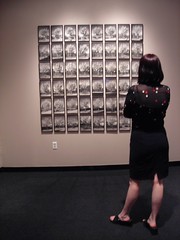
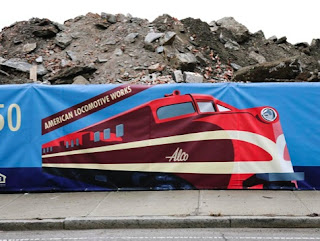 A few words about the "American Locomotive Works " (ALCO) development project now underway on Valley St. in Providence. Once upon a time there was a railroad locomotive factory on part of this site. This was the Rhode Island Locomotive Works, founded in 1866 and located on Hemlock Street. Between 1866 and 1899 the company produced some 3400 steam locomotives. In 1901 the company was merged with several other locomotive builders to form the American Locomotive Company, headquartered in Schenectady NY. At this point the Rhode Island works had already begun to diversify, shifting production towards a line of automobiles and trucks. This move was ultimately unsuccessful, and the Providence factory closed in 1907.
A few words about the "American Locomotive Works " (ALCO) development project now underway on Valley St. in Providence. Once upon a time there was a railroad locomotive factory on part of this site. This was the Rhode Island Locomotive Works, founded in 1866 and located on Hemlock Street. Between 1866 and 1899 the company produced some 3400 steam locomotives. In 1901 the company was merged with several other locomotive builders to form the American Locomotive Company, headquartered in Schenectady NY. At this point the Rhode Island works had already begun to diversify, shifting production towards a line of automobiles and trucks. This move was ultimately unsuccessful, and the Providence factory closed in 1907. to RI Locomotive Works. SBER Co. may well wish to market the idea that their tenants are living and working in a restored locomotive factory. They may even fill it with big murals of steam and diesel locomotives. While I have no objection to murals of locomotives, this notion is just a developers fiction, a kind of Disneyfication of our industrial heritage. Most of the buildings on the site were built by the U.S. Rubber Co. Perhaps that is the history that should be celebrated (or exploited, as the case may be) here. Meanwhile, back in Schenectady, the real ALCO plant sits largely unused, having closed for good in 1969. It was at this site that the company built more steam locomotives than any other builder. This factory built the famous "Big Boy" locomotives, the world's largest, and built tanks during WWI and WWII. It was ALCO, alone of any of the U.S. steam locomotive builders that successfully made the transition to diesel manufacturing. Hopefully someday this site and this history will be preserved and celebrated as it should.
to RI Locomotive Works. SBER Co. may well wish to market the idea that their tenants are living and working in a restored locomotive factory. They may even fill it with big murals of steam and diesel locomotives. While I have no objection to murals of locomotives, this notion is just a developers fiction, a kind of Disneyfication of our industrial heritage. Most of the buildings on the site were built by the U.S. Rubber Co. Perhaps that is the history that should be celebrated (or exploited, as the case may be) here. Meanwhile, back in Schenectady, the real ALCO plant sits largely unused, having closed for good in 1969. It was at this site that the company built more steam locomotives than any other builder. This factory built the famous "Big Boy" locomotives, the world's largest, and built tanks during WWI and WWII. It was ALCO, alone of any of the U.S. steam locomotive builders that successfully made the transition to diesel manufacturing. Hopefully someday this site and this history will be preserved and celebrated as it should.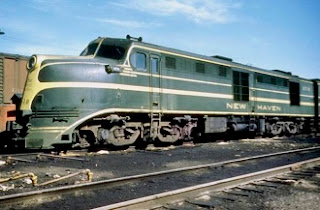 banners show a stylized but pretty accurate DL-109, which is an interesting choice. The New Haven Railroad (NYNH&H) owned by far the largest group of these engines, 60 out of 74 produced. They saw many years of service on the Boston to New York mainline, passing quite close to the site along Harris Ave. This line is now part of Amtrak's northeast corridor route.
banners show a stylized but pretty accurate DL-109, which is an interesting choice. The New Haven Railroad (NYNH&H) owned by far the largest group of these engines, 60 out of 74 produced. They saw many years of service on the Boston to New York mainline, passing quite close to the site along Harris Ave. This line is now part of Amtrak's northeast corridor route. More on the Pawtucket - Central Falls train station. First, some background: Built in 1915 by the NYNH&H Railroad, this station has some unique aspects that have had an impact on its current sorry state. As can be seen in the pictures, the main portion of the buil
More on the Pawtucket - Central Falls train station. First, some background: Built in 1915 by the NYNH&H Railroad, this station has some unique aspects that have had an impact on its current sorry state. As can be seen in the pictures, the main portion of the buil ding straddles the rail-bed. Staircases led down to platforms below the main concourse. Two wings extend out from the north side of the building on either side of the tracks, giving the station a "U" shape footprint. Much of the structure sits in the airspace over the railroad tracks. With transfer of the railroad property progressing from the New Haven to Penn Central and then to Amtrak when Conrail was formed ownership of the station itself has at times been unclear. Although Amtrak never owned the structure, recent court hearings revealed the fact that Amtrak asserts the right to review any demolition plans, citing a deed restriction placed on the property in 1972. Amtrak took complete ownership of the railroad right-of-way in 1976.
ding straddles the rail-bed. Staircases led down to platforms below the main concourse. Two wings extend out from the north side of the building on either side of the tracks, giving the station a "U" shape footprint. Much of the structure sits in the airspace over the railroad tracks. With transfer of the railroad property progressing from the New Haven to Penn Central and then to Amtrak when Conrail was formed ownership of the station itself has at times been unclear. Although Amtrak never owned the structure, recent court hearings revealed the fact that Amtrak asserts the right to review any demolition plans, citing a deed restriction placed on the property in 1972. Amtrak took complete ownership of the railroad right-of-way in 1976.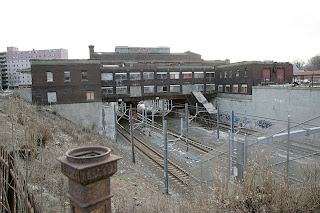 eglect. The station has been left to decay since the 1960's, with portions seeing some occasional use as a flea market and a pentecostal church. It also should be stated that it may likely be that had the station resided in one city or the other, it would be gone now.
eglect. The station has been left to decay since the 1960's, with portions seeing some occasional use as a flea market and a pentecostal church. It also should be stated that it may likely be that had the station resided in one city or the other, it would be gone now. All of this strikes me as another depressing case of a severe lack of vision. We live in a "use and discard" culture, and outside of the preservation community that attitude extends to buildings and even to trains and railroads themselves. The language in some of the newspaper stories reporting on this very issue reflects this, referring to the station as "a relic" and implying that demolition was "inevitable" merely because the building was old and neglected. All of this despite many physical examples to the contrary that exist right in our own community. The 18th century homes on Benefit Street, Saint Maria's Home on Governor Street, The Masonic Temple, all have fallen to decay and been revived. There are many others. Think of what a sad place Providence would be without them, something like Hartford. These buildings shouldn't be allowed to deteriorate to such dismal states, and they certainly shouldn't be helped to decay by the very people charged with their upkeep.
All of this strikes me as another depressing case of a severe lack of vision. We live in a "use and discard" culture, and outside of the preservation community that attitude extends to buildings and even to trains and railroads themselves. The language in some of the newspaper stories reporting on this very issue reflects this, referring to the station as "a relic" and implying that demolition was "inevitable" merely because the building was old and neglected. All of this despite many physical examples to the contrary that exist right in our own community. The 18th century homes on Benefit Street, Saint Maria's Home on Governor Street, The Masonic Temple, all have fallen to decay and been revived. There are many others. Think of what a sad place Providence would be without them, something like Hartford. These buildings shouldn't be allowed to deteriorate to such dismal states, and they certainly shouldn't be helped to decay by the very people charged with their upkeep.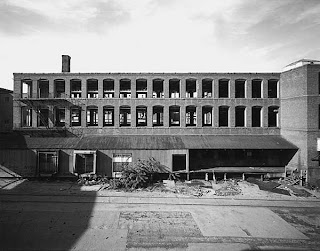 y in 1994? Yes, so said the Mayor, and Yet-- The city, or at least a part of it, allowed a salvage company in to remove all of the metal widow frames from every building, exposing the interiors to the elements. Had the buildings been buttoned up and kept secure, a mere ten years later the developers would have been lining up to take over the property so they could put fancy signs on the roof and fancy tenants inside. In an ironic twist, the Stop and Shop built on the Gorham site is now closed, perhaps the city will fight to preserve that. More recently, the Silver Spring Dye Works came down to make way for a Home Depot, complete with fake bricked in round-top windows on its street side veneer. Silver Spring was a sad loss, done in both by the distraction over the fight to save Eagle Square and the lack of any sense that an over-heated Boston real estate market would spark a condo explosion in Providence a mere two years later. At this point, even if the train station is saved, and it should be, a great opportunity will still have been lost: that of a comprehensively redeveloped site featuring a T stop, a community center and retail shops that serve as a focal point for the community, as unique point of pride, and as a greater source of revenue and profit than any single CVS store will provide. It should be acknowledged that many people in the community and in the Pawtucket city government have been working very hard to realize such a plan. That fact makes it more than a shame that what we will get, at best, is yet another chain drug store (and parking lot) shoehorned uncomfortably against a Beaux Arts gem from another age.
y in 1994? Yes, so said the Mayor, and Yet-- The city, or at least a part of it, allowed a salvage company in to remove all of the metal widow frames from every building, exposing the interiors to the elements. Had the buildings been buttoned up and kept secure, a mere ten years later the developers would have been lining up to take over the property so they could put fancy signs on the roof and fancy tenants inside. In an ironic twist, the Stop and Shop built on the Gorham site is now closed, perhaps the city will fight to preserve that. More recently, the Silver Spring Dye Works came down to make way for a Home Depot, complete with fake bricked in round-top windows on its street side veneer. Silver Spring was a sad loss, done in both by the distraction over the fight to save Eagle Square and the lack of any sense that an over-heated Boston real estate market would spark a condo explosion in Providence a mere two years later. At this point, even if the train station is saved, and it should be, a great opportunity will still have been lost: that of a comprehensively redeveloped site featuring a T stop, a community center and retail shops that serve as a focal point for the community, as unique point of pride, and as a greater source of revenue and profit than any single CVS store will provide. It should be acknowledged that many people in the community and in the Pawtucket city government have been working very hard to realize such a plan. That fact makes it more than a shame that what we will get, at best, is yet another chain drug store (and parking lot) shoehorned uncomfortably against a Beaux Arts gem from another age.
 The 1915 New Haven Railroad station on Broad Street is in serious danger of demolition. This would be a tragic loss, especially in light of the fact that the proposed development would come in the form of a CVS store. Do we need another? The train station is just one block from the Walgreens drug store that was built on the site of the historic Leroy theater. Does history have to repeat itself in this way? The train station should be restored as a working train station, connecting Central Falls and Pawtucket with the rest of the Northeast Corridor by rail once more. That is history worth repeating.
The 1915 New Haven Railroad station on Broad Street is in serious danger of demolition. This would be a tragic loss, especially in light of the fact that the proposed development would come in the form of a CVS store. Do we need another? The train station is just one block from the Walgreens drug store that was built on the site of the historic Leroy theater. Does history have to repeat itself in this way? The train station should be restored as a working train station, connecting Central Falls and Pawtucket with the rest of the Northeast Corridor by rail once more. That is history worth repeating.

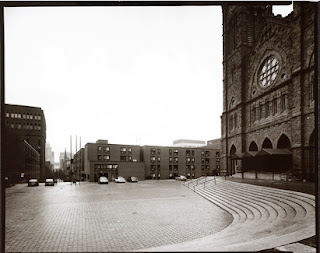 The Providence Project gets some press in the Thursday April 20 Providence Journal. This piece is extracted from a story on the excellent photo show at Brown.
The Providence Project gets some press in the Thursday April 20 Providence Journal. This piece is extracted from a story on the excellent photo show at Brown. Special Gallery Night Reception for Providence Project
Special Gallery Night Reception for Providence Project 